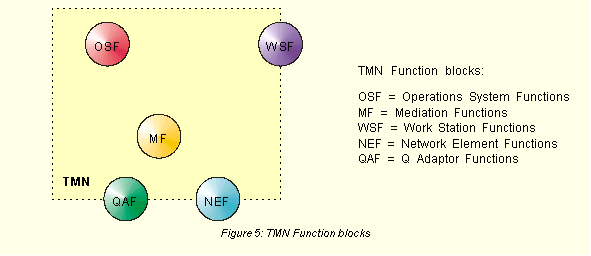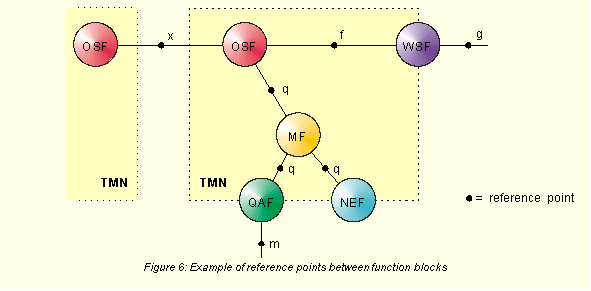Five different types of function blocks are defined by TMN's functional architecture. It is not necessary that all of these types are present in each possible TMN configuration. On the other hand, most TMN configurations will support multiple function blocks of the same type.
Figure 5 has been copied from the TMN recommendations and shows all five types of function blocks. In this figure, two types ( OSF and MF ) are completely drawn within the box labelled `TMN'. This way of drawing indicates that these function blocks are completely specified by the TMN recommendations. The other three types ( WSF , NEF and QAF ) are drawn at the edge of the box to indicate that only parts of these function blocks are specified by TMN. The following pages provide short descriptions of, plus the relation between these five function blocks.

The TMN functional architecture introduces the concept of reference point to delineate function blocks. Five different classes of reference points are identified. Three of them (q, f and x) are completely described by the TMN recommendations; the other classes (g and m) are located outside the TMN and only partially described.

Figure 6 provides an example of reference points and function blocks. The picture shows for instance that the Mediation Function (MF) can be reached via q reference points and that the m reference point can be used to reach the Q Adaptor Function (QAF) from outside TMN.